

Regular Bottling:
Glenfarclas 8 YO 40% (mainly for Switzerland, Austria and Belgium)
Glenfarclas 10 YO 40%
Glenfarclas 12 YO 43%
Glenfarclas 105 cask strength 60%
Glenfarclas 15 YO 46%
Glenfarclas 17 YO 43% (mainly for the USA and the Far East)
Glenfarclas 21 YO 43%
Glenfarclas 25 YO 43%
Glenfarclas 30 YO 43%
For the tasted whiskies, click here
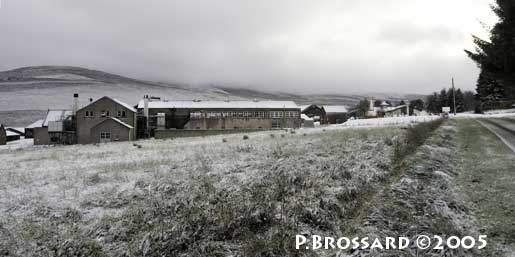
Glenfarclas is one of the rare independent whisky company left in Scotland and well known for the quality of their single malts. About 80% of the whiskies are matured in sherry casks. Floor malting were operational until 1972. In addition of having the largest wash stills of the Speyside, they have also one of the largest (the largest?) mash tun of the area (semi-lauter).
I had the opportunity to visit the Glenfarclas distillery in November 2005 in company of Mr. Robert Ransom, Sales and Marketing Manager. The distillery quite remote and modern. Don't look for a Doig's pagoda roof in the distillery, it has been moved to the top of the visitor centre. The malt barn is much larger than in most distilleries of the Speyside and can store malt for about 2 weeks of production. Interestingly, to acess to the brewing house, you have to climb and to pass the ultra-modern swiss Bühler mill and the destoner. It does give a change to the traditional red Boby mills. In the brewing house, the semi-lauter mash tun and the washbacks are made of stainless steel. The mash tun is quite impressive and can hold 15 tonnes of grist. Its diameter is 10 metres. In the still house, there are 6 stills (3 Wash and 3 Spirits), which can work as a group of 2+2 or 1+1. During my visit, 2 Wash stills and 2 Spirit Stills were working, while the 2 other stills (1 wash and 1 spirit) were turned off (for cleaning?). All the stills had a reflux bowl neck. The stills are about 10 mm thick in their base and heated by direct fire. It is said that the direct fire gives to Glenfarclas its distinctive flavours. Those stills can last about 20 years before being replaced. Unfortunately, I did not had the opportunity to visit the warehouses and the visit ended up in the visitor center with a dram of Glenfarclas 10 YO in the Ships room. The Ships room is furnished with oak panels coming from the Empress of Australia ship. In 1990, Glenfarclas decided to change of sherry cask suppliers.
History of the Glenfarclas distillery
The date of foundation of the distillery is unclear; a drawing of the distillery dated 1791 would suggest that the distillery was already active on that year and Alfred Barnard mentioned the date of 1836. However, the first appearance of Glenfarclas in the official records dates from 1844 when Robert Hay acquired the license to distil. The plant and the equipment of the distillery were bought by John Grant of Blairfindy in 1865 following the death of Robert Hay. The distillery was sublet for 5 years to John Smith (future founder of the Cragganmore distillery). At the end of the lease, in 1870, John Grant and his son George took over the distillery and produced 1,200 gallons a week. In their first year, they filled 242 casks. In 1875, the lease for the distillery and the Rechlerich farm was renewed at an annual rent of £130. In 1883, the warehouses were rebuilt. By 1896, the production increased to 6,000 gallons a week and 50% of the distillery’s interest were taken by Pattisons Ltd of Leith.
At the time of Alfred Barnard’s visit in the 1880s, the annual output was 50,000 gallons, the distillery contained 6 washbacks and 2 stills of the old Pot kind. The seven warehouses were holding 2,000 casks.
In 1896, using the £6000 subscribed by the Pattisons brothers, John and George Grant reconstructed the distillery with the help of famous Elgin architect Charles Doig. After the crash of the Pattisons in December 1898, this put the Grant’s brothers in a very difficult position. Fortunately, the Caledonian bank supported the Grants to trade out the difficulties. This experience lead the Grants to remain fiercely independent. The Grants regained the 50% shares owned by the Pattison’s liquidator in May 1905.
In 1930, on the expiry of the lease, George grant bought the freehold for the distillery and the two local farms from Sir George Macpherson-Grant. A few months after, the court confirmed the distillery’s right to water and peat cutting.
The distillery capacity doubled in size in 1960, when a new pair of stills was added and increased by a further 50% in 1969. When the second pair of stills were added in 1960, the worm tubs for the N°1 stills were replaced by condensers. The number of stills is increased to 6 in 1976 and the reception centre inaugurated in 1973.
Source: Distillery Visits, Ian A. McWilliam (Marketing Excutive, Glenfarclas), Glenfarclas.co.uk , Glenfarclas 175 by Ian Buxton, The Scotch whisky industry record by H. Charles Craig,s, The Scotch Whisky Distilleries by Misako Udo,.
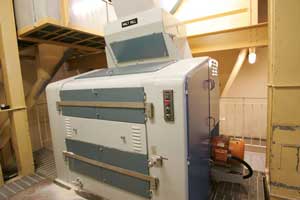 |
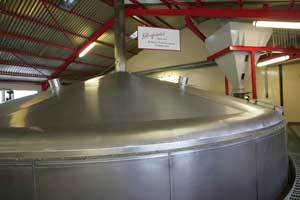 |
| The ultra-modern Bühler Swill mill. | The 10m diameter stainless steel Mash tun. |
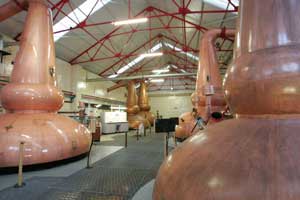 |
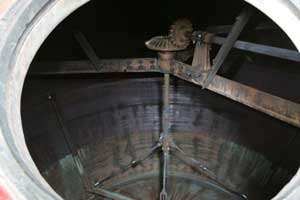 |
| The six stills (3 Wash and 3 Spirits) in the Still house with their reflux bowl necks. | The inside of a wash still. |
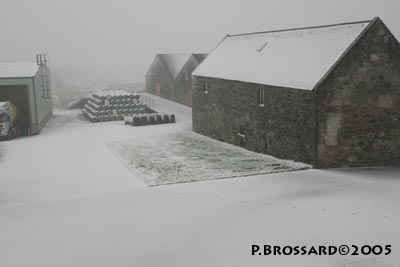 |
| They have dunnage style warehouses at Glenfarclas, on one (back) or two levels (front). |
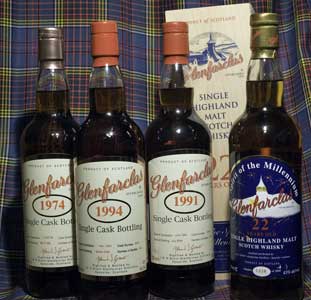 |
| Some single cask (cask strength) bottling from Glenfarclas distilled in 1974, 1991 and 1994 as well as the limited edition for the millenium. |
| Official/Original bottlings (OB) | |
| Age | |
| Glenfarclas 8 YO, OB, 40%. B:2005 | Rating: 10/20 |
| Glenfarclas 105, 20 YO, OB, 60%. B: 2013. | Rating: 15/20 |
| Glenfarclas 21 YO, OB, 43%, B: 2009 | Rating: 15/20 |
| Glenfarclas 21 YO for E. Giaconne, Pinerolo import, OB, 51.5% | Rating: 17/20 |
| Glenfarclas 25 YO, OB, 43%, B: 2008 | Rating: 13/20 |
| Glenfarclas 30 YO, OB, 43%, B: 2009 | Rating: 15/20 |
| Glenfarclas 31 YO Port Cask, OB, 42.8%, B: 2014 | Rating: 15/20 |
| Glenfarclas 40 YO, OB, 46%, B: 2011 | Rating: 13/20 |
| Vintages | |
| Glenfarclas 1952 Family Cask, OB, 56.5%, c. 1712, 110 b. | Rating: 17/20 |
| Glenfarclas 1953 Family Cask, OB, 53.7%, c. 486. | Rating: 17/20 |
| Glenfarclas Coronation, 1953, OB, 51.5%, B: 2013, 60 b. | Rating: 19/20 |
| Glenfarclas 1960 Family Cask, OB, 52.4%, B: 2007, c. 1767, 228 b. | Rating: 16/20 |
Glenfarclas 1960 Family Cask, 47 YO, OB, 43.8%, c. 1773 |
Rating: 15/20 |
| Glenfarclas 1961 Family Cask, OB, 52.2%, B: 2009, c. 1322 | Rating: 18/20 |
| Glenfarclas 1962 Family Cask, OB, 40.9%, B: 2013, c.3247, 138 bo. | Rating: 13/20 |
| Glenfarclas 1963 Family Cask, OB, 50.4%, B: 2012, c. 179, 154 b. | Rating: 15/20 |
| Glenfarclas 1965 Family Cask, OB, 60 %, B: 2007, c. 3861, 417 b. | Rating: 18/20 |
| Glenfarclas 1966 Sherry Casks, 46 YO, OB, 43.2%, B:2013, 656 bottles, casks 2603-4, 3551-2. | Rating: 17/20 |
| Glenfarclas 1968 Family Cask 699 Gonzaless Byass for Luc Timmermans, OB, 51%, B: 2009, 60 bottles. | Rating: 18/20 |
| Glenfarclas 1973 in Flames, OB, 58.8%, B: 2007, c. 2578, 189 b. | Rating: 18/20 |
| Glenfarclas 1980 Family Cask, OB, 46.2%, B:2014, c.3180, 357 b. | Rating: 14/20 |
| Glenfarclas 1986 Family Cask, OB, 49%, c. 2919 | Rating: 14/20 |
| Glenfarclas 1986 Family Cask, OB, 56.5%, B: 2009,c. 3434, 521 b. | Rating: 17/20 |
| Glenfarclas 1988 Family Cask, OB, 56.3%, c. 703 | Rating: 18/20 |
| Glenfarclas 1989 Limited Rare Bottling - Edition No.18 John Duns Scotus, OB, 46%, B:2014, c. 5249,5250,5251,5252,12992,13090, 2400 b. | Rating: 16/20 |
| Glenfarclas 1991 LMDW, 13 YO, OB, 46%, c. 5621 | Rating: 13/20 |
| Glenfarclas 1991, OB, 46%, c. 5619, 649 b. | Rating: 14/20 |
| Glenfarclas 1992 Family Cask for the Pot Still, OB, 50.5%, B: 2012. | Rating: 15/20 |
| Glenfarclas 1994 Family cask, OB, 59.6%, B: 2007 cask 2935 | Rating: 15/20 |
| Glenfarclas 1996 Manzanilla cask, 9 YO, OB, 46%, B: 2005. 816 b. | Rating: 12/20 |
| Non-aged specifided (NAS) | |
| Glenfarclas 105, OB, 60%, B: 2009 | Rating: 11/20 |
| Independent bottlings (IB) and "anonymous Glenfarclas/Ballindaloch (?)" | |
| Adelphi | |
| Breath of Speyside, 1991, 18 YO, Adelphi, 54.2%, cask 5145, 520 b | Rating: 17/20 |
| The Whisky That Cannot Be Named, 50 YO, Adelphi, 53.1%, B: 2003 | Rating: 19/20 |
| Daily Dram | |
| Feral Clangs 1966, 41 YO, Daily Dram, 45.7%, B: 2008 | Rating: 14/20 |
| Douglas Laing | |
| Speyside 1966 OMC for the Whisky Show 2009, 43 YO, D. Laing, 48.2%, B: 2009 | Rating: 14/20 |
| Scott's selection | |
| Glenfarclas1965 ("Limited Edition Single Highland Malt"), 40 YO, Scott’s selection, 48.5%, B: 2005 | Rating: 17/20 |
| The Whisky Agency (TWA) | |
| Speyside 1976 Perfect Dram (Glenfarclas ?), 33 YO, The Whisky Agency, 53.4%, B: 2009, 125 b. | Rating: 15/20 |
| The Whisky Fair | |
| Speyside Single Malt 1965 (Glenfarclas?), 41 YO, The Whiskyfair, B: 2007, 53.5%, 150 bottles | Rating: 18/20 |
| Speyside Single Malt 1966 (Glenfarclas?), 40 YO, The Whiskyfair, B: 2007, 52.4%, 150 b. | Rating: 08/20 |
P.Brossard Jan. 2006. Last update: 03 Nov 2012 (History section added).
Copyright © 2006-10Patrick Brossard. All Rights Reserved